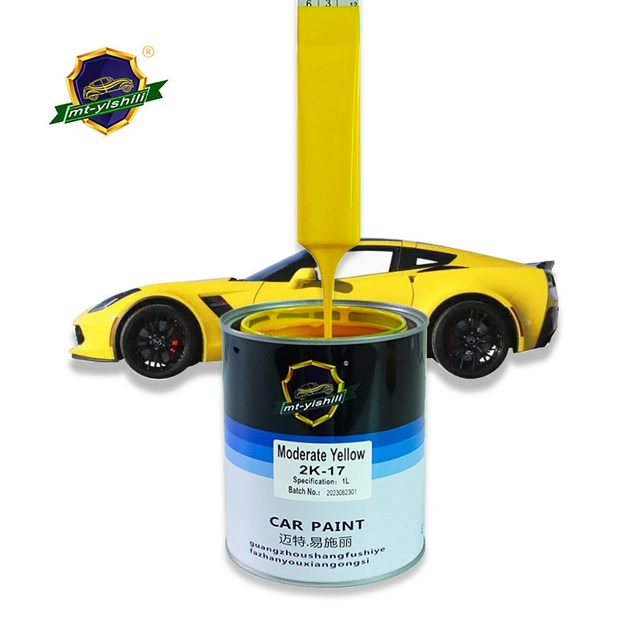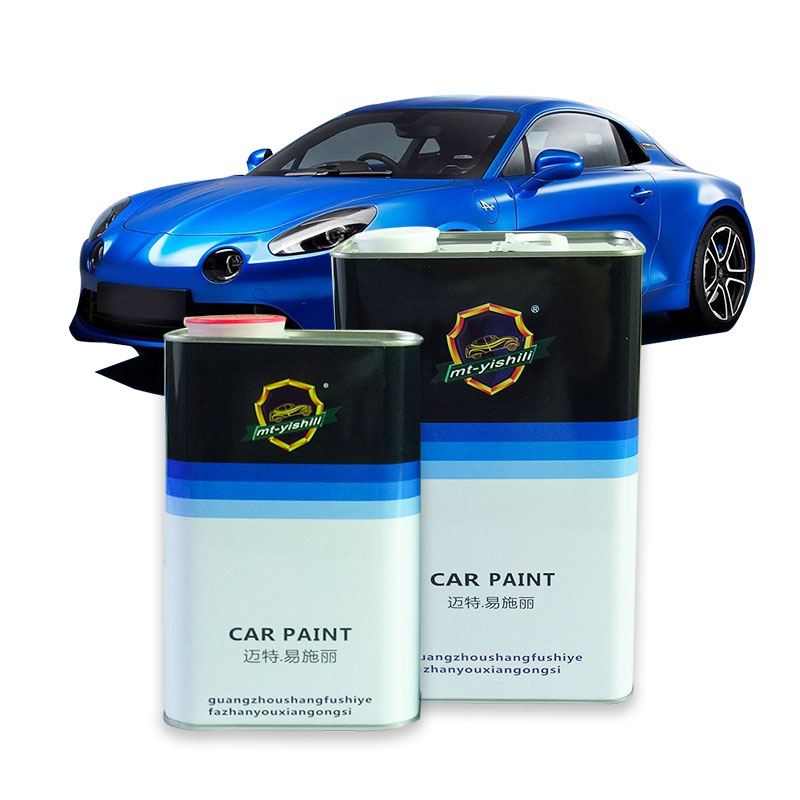
Automotive painting is an essential aspect of car maintenance and customization, whether you’re restoring a classic car, performing touch-ups, or simply changing your vehicle’s color. One of the most common questions car enthusiasts, professionals, and DIYers have is, “How long does it take automotive paint to dry?” This seemingly simple question is crucial for achieving a flawless finish and ensuring the longevity of the paint job.
Drying times can vary widely depending on several factors, including the type of paint used, the number of layers applied, environmental conditions, and the type of surface being painted. In this guide, we’ll dive deep into the different types of automotive paints, the factors that influence drying time, and how to speed up the process for the best results.
Understanding Automotive Paint Types and Their Drying Times
Before we can discuss how long automotive paint takes to dry, it’s important to understand the different types of automotive paints and how they behave during the drying process. The drying times for car paints differ significantly depending on whether you’re using solvent-based paints, water-based paints, 1K, or 2K paints. Here’s a detailed breakdown of each type and its corresponding drying time.
1. Solvent-Based Paints
Solvent-based automotive paints are made by mixing pigments and resins with organic solvents. These paints are commonly used because they provide a smooth finish and are durable. Solvent-based paints generally dry faster compared to water-based paints due to the evaporation of the solvent.
The drying process for solvent-based paints involves the evaporation of solvents from the paint film, and the curing time can be affected by environmental conditions like humidity and temperature.
2. Water-Based Paints
Water-based automotive paints use water as a solvent and are generally more environmentally friendly than solvent-based paints. However, they tend to take longer to dry because the water must evaporate before the paint can fully set.
While water-based paints may take longer to dry, they are known for their ease of application and smooth finish, making them a popular choice in the automotive industry.
3. 1K Paints
1K automotive paints are single-component paints that don’t require mixing with a hardener before use. They are simpler to use and are ideal for touch-ups and smaller jobs. 1K paints dry relatively quickly due to their composition.
Since 1K automotive paints don’t require a hardener, the curing time is typically shorter compared to 2K paints. However, they may not offer the same level of durability.
4. 2K Paints
2K automotive paints require mixing with a hardener or activator before use, which helps improve the durability and resistance of the paint. 2K paints are more complex but offer better protection and a longer-lasting finish.
The addition of the hardener increases the overall curing time, but it also results in a more durable and resilient finish, which is why 2K automotive paints are often preferred for professional-quality paint jobs.
5. Specialty Paints: Metallic, Pearl, and Custom Colors
Specialty automotive paints, such as metallic paints and pearl paints, often require longer drying times due to their composition. Metallic paints, for instance, contain fine metal flakes that take longer to settle and adhere to the surface, affecting the overall drying time.
Pearl paints, which contain special pigments that create a shimmering effect, also take longer to dry compared to standard paints. These paints are more complex and require a longer curing time to achieve their best finish.

Factors That Affect Automotive Paint Drying Time
While the type of paint you use plays a crucial role in determining drying time, several other factors influence how long it takes for the paint to dry properly. These factors include environmental conditions, temperature, humidity, and the thickness of the paint layers. Let’s dive deeper into each of these factors.
1. Temperature
Temperature plays a critical role in the drying process. Warmer temperatures accelerate the evaporation of solvents and water, speeding up the drying time. On the other hand, cooler temperatures slow down the drying process, which is why painting in cold weather can lead to an incomplete or uneven drying process.
Optimal temperature for automotive painting: 60°F to 75°F (15°C to 24°C)
Impact of temperature: In temperatures lower than 60°F, drying times can be extended, and the paint may not adhere as well to the surface.
2. Humidity
Humidity refers to the amount of moisture in the air. In high-humidity environments, paint takes longer to dry because the moisture in the air competes with the solvent in the paint. Excess moisture can also affect the texture of the paint, causing it to become tacky or uneven.
Ideal humidity level for automotive painting: 40% to 60%
Impact of high humidity: In high-humidity conditions, drying times can double or even triple. Using a fast-drying thinner can help mitigate this issue.
3. Air Circulation
Proper ventilation and airflow help to speed up the drying process. Good airflow helps carry away the evaporated solvent or water from the paint, speeding up the evaporation process and promoting faster curing. Without adequate airflow, the drying process can slow down, and the surface may develop imperfections.
4. Number of Paint Layers
The more layers of paint you apply, the longer it will take for the paint to dry. For example, if you apply a base coat, followed by a clear coat, each additional layer will increase the overall drying time. It is essential to let each coat dry thoroughly before applying the next to avoid smudging and unevenness.
5. Paint Thickness
The thicker the paint layer, the longer it will take to dry. Applying a thick coat may trap moisture underneath, causing the paint to dry unevenly and leading to issues like cracking or bubbling. Applying thin coats is always better for achieving smooth and even coverage.
How to Speed Up Automotive Paint Drying Time
If you’re in a hurry or need to speed up the drying time for your automotive paint job, there are a few techniques you can use to ensure quicker drying without compromising the finish.
1. Use a Paint Drying Accelerator
Paint drying accelerators are chemical additives that can be mixed with paint or clear coats to speed up the drying process. These accelerators reduce the time it takes for the solvents to evaporate, allowing the paint to cure faster.
2. Increase Airflow with Fans
Using fans in the workspace can help create airflow that will assist in drying the paint. Ensure that the fans are positioned to promote consistent airflow over the painted surface without disturbing the paint itself.
3. Use a Heat Lamp or Infrared Curing System
Heat lamps or infrared curing systems are often used in professional automotive painting to accelerate the drying process. These devices help raise the temperature of the painted surface, which speeds up the evaporation of solvents.
4. Choose Fast-Drying Thinners
If you’re using solvent-based paints, fast-drying thinners can help speed up the drying process by ensuring the solvents in the paint evaporate quickly. However, it’s important to strike a balance, as using too much thinner can affect the paint’s consistency and finish.
FAQs
Q1: How long does automotive paint take to dry?
A1: Automotive paint generally dries to the touch in 1-2 hours, but full curing may take 24-48 hours depending on the type of paint and environmental conditions.
Q2: Can I speed up the drying process for car paint?
A2: Yes, using a paint drying accelerator, increasing airflow, or using heat lamps can speed up the drying time. Be cautious not to overdo it, as this could affect the finish.
Q3: How long does it take for metallic paint to dry?
A3: Metallic paint typically takes longer to dry compared to regular paint. It may take around 3-4 hours for the paint to dry to the touch and 48-72 hours for full curing.
Q4: Does humidity affect automotive paint drying?
A4: Yes, high humidity slows down the drying process. It is recommended to paint in low-humidity conditions or use a fast-drying thinner to combat humidity effects.
Q5: How long should I wait before applying a second coat?
A5: You should wait until the first coat is dry to the touch, typically around 1-2 hours, before applying the second coat. For best results, it’s recommended to wait 24 hours for proper curing.
Q6: Can I drive my car immediately after painting?
A6: It is best to wait at least 24-48 hours before driving the car to allow the paint to cure fully and avoid damage.
Q7: How can I prevent paint imperfections during drying?
A7: Ensure good airflow, adequate temperature, and low humidity in the painting environment. Apply thin coats of paint and avoid touching or disturbing the surface during the drying process.
Understanding how long it takes automotive paint to dry is essential for achieving a professional finish and ensuring your paint job lasts. Whether you’re using solvent-based paints, water-based paints, or specialty finishes like metallic or pearl paints, knowing the drying time and the factors that affect it will help you achieve the best results.
By following the tips and methods outlined in this article, such as using fast-drying thinners, increasing airflow, and optimizing temperature, you can significantly speed up the drying process without compromising the quality of your paint job. Whether you're a professional or a DIY enthusiast, mastering the art of paint drying can take your automotive projects to the next level.




















